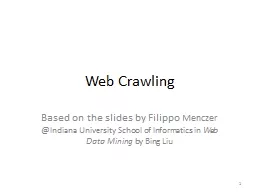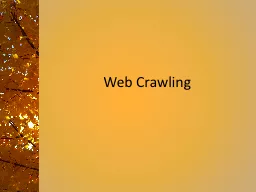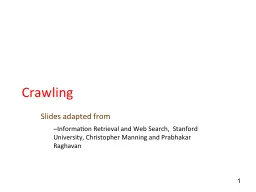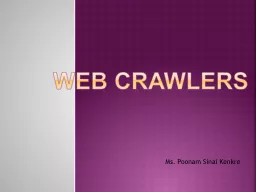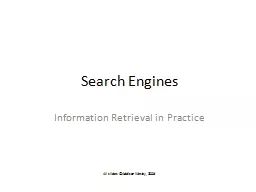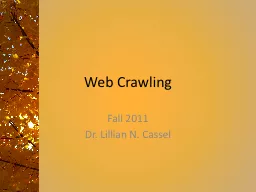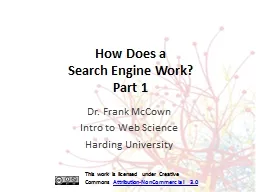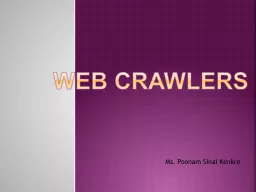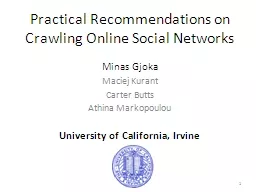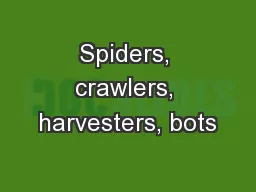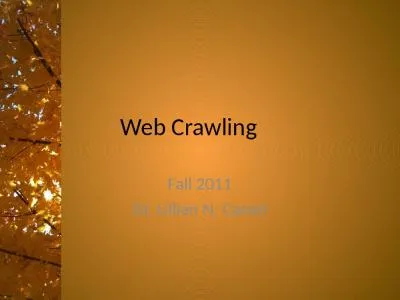PPT-Web Crawling Based on the slides by
Author : celsa-spraggs | Published Date : 2018-11-06
Filippo Menczer Indiana University School of Informatics in Web Data Mining by Bing Liu 1 Outline Motivation and taxonomy of crawlers Basic crawlers and implementation
Presentation Embed Code
Download Presentation
Download Presentation The PPT/PDF document "Web Crawling Based on the slides by" is the property of its rightful owner. Permission is granted to download and print the materials on this website for personal, non-commercial use only, and to display it on your personal computer provided you do not modify the materials and that you retain all copyright notices contained in the materials. By downloading content from our website, you accept the terms of this agreement.
Web Crawling Based on the slides by: Transcript
Download Rules Of Document
"Web Crawling Based on the slides by"The content belongs to its owner. You may download and print it for personal use, without modification, and keep all copyright notices. By downloading, you agree to these terms.
Related Documents

